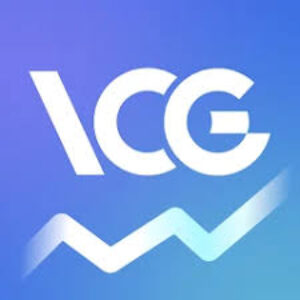
Our latest blog further explains finance through active trading. Explore the intricacies of active trading – a realm where swift decisions and strategic moves define success. Uncover the essence of short-term profit strategies, diverse trading approaches, and the challenges that shape the landscape of active trading. Dive into the blog to unravel the secrets behind the art of active trading.
Active trading, also known as short-term trading, involves buying and selling securities to take advantage of short-term price movements and make quick profits. Active traders use various tools, such as fundamental, quantitative, and technical analysis, to identify opportunities in the financial markets. They trade a range of instruments, including stocks, bonds, currencies, and commodities, executing frequent transactions to capitalise on market fluctuations.
Key Takeaways:
- Active trading involves buying and selling securities based on short-term price movements
- Active traders use various tools and strategies to identify opportunities and make quick profits
- Scalping, day trading, swing trading, and position trading are different active trading strategies
- Active trading offers potential for higher returns but carries risks such as transaction costs and exposure to market events
- Traders need to implement risk management strategies and stay informed about market trends
What is Active Trading
Active trading encompasses different strategies, including scalping, day trading, swing trading, and position trading. Scalpers aim to profit from small price movements within seconds or minutes. Day traders open and close positions within the same trading day. Swing traders focus on short-term trends, holding positions for days to weeks. Position traders take a longer-term approach, keeping positions open for weeks to months.
Although active trading offers potential for higher returns compared to long-term investing, it also carries certain risks. Transaction costs, such as commissions and fees, can eat into profits. Emotional stress can arise from the fast-paced nature of trading. Active traders are also exposed to market events that can impact their positions. Therefore, it is crucial for active traders to understand these risks and implement appropriate risk management strategies.
Exploring Further: A Deep Dive into Short-Term Profit Strategies
The practice of active trading can be defined as the buying and selling of securities to capitalise on short-term price movements, is a dynamic approach in financial markets. This article delves into the intricacies of active trading, exploring its strategies, tools, and the distinction between active trading and investing.
Unveiling the Essence of the Trade
Active trading stands as a dynamic and strategic approach to the financial markets, where investors engage in the rapid buying and selling of securities. Unlike passive investing, which adopts a long-term buy-and-hold strategy, active trading seeks to capitalise on short-term price movements. In this method, traders carefully analyse market trends, leveraging various tools and techniques to make quick and informed decisions.
Key Characteristics of Active Trading
Active trading is characterised by its agility and quick decision-making. Traders actively participate in the market, holding positions for relatively short durations. The focus is on exploiting small price fluctuations in highly liquid markets, such as stocks, foreign currency trades, futures, and options with substantial volume.
Illustrative Examples of Active Trading Strategies
1. Scalping:
Example: Imagine a trader making numerous trades in a single day, aiming to profit from minimal price changes. This involves executing trades within seconds or minutes, requiring a keen eye for market movements.
2. Day Trading:
Example: Consider a trader opening and closing positions within a single trading day, capitalising on short-term price fluctuations. This approach demands constant monitoring and swift decision-making.
3. Swing Trading:
Example: Picture a trader holding positions for several days to a few months, exploiting intermediate price trends. This strategy allows for a more relaxed pace compared to day trading.
4. Position Trading:
Example: Envision a trader holding positions for an extended period, often several months or more, to benefit from major price trends. Position trading requires a longer-term perspective and patience.
Instruments Utilised in Active Trading
Active traders operate across various financial instruments, including stocks, bonds, currencies, and commodities. Furthermore, they may employ options, futures, and derivatives for risk management or to enhance potential returns. This diverse range of instruments provides flexibility and adaptability in response to changing market conditions.
The Role of Analysis in Active Trading
While active traders do not entirely disregard fundamental or economic aspects, the emphasis lies heavily on technical and statistical analysis. Market participants often base their decisions on price action, technical indicators, and other relevant concepts to stay ahead of short-term market movements.
Balancing Act: Active Trading vs. Active Investing
Distinguishing between active trading and active investing is crucial for understanding market approaches. Active traders focus on short-term profits through frequent trades, acknowledging the associated risks. On the contrary, active investors strategically rearrange portfolios for long-term gains, constantly seeking alpha compared to passive investing strategies.
Conclusion: Navigating the Dynamics of Active Trading
Active trading unveils a world of continuous analysis, strategic decision-making, and adaptability to market dynamics. Traders employ a spectrum of strategies, choosing the most suitable approach based on their risk tolerance and desired timeframes. In this ever-evolving financial landscape, active trading stands as a testament to the pursuit of short-term profits through informed and dynamic market participation.
Navigating the Dynamics of Active Trading Strategies
Understanding Common Active Trading Strategies
Active trading encompasses a diverse array of strategies, each tailored to exploit specific market conditions and timeframes. These strategies play a pivotal role in the dynamic world of active trading, offering traders flexibility and options based on their risk tolerance and goals.
For example, scalping involves making numerous trades throughout the day to profit from minimal price changes. Traders executing this strategy focus on small, quick gains and often close positions within seconds or minutes.
Another example is day trading is characterised by opening and closing positions within a single trading day. Traders keen on exploiting short-term price fluctuations engage in constant monitoring and make swift decisions based on intraday trends.
On the other hand, swing trading revolves around holding positions for several days to a few months to capture intermediate price trends. This strategy provides a middle ground between the rapid pace of day trading and the longer-term perspective of position trading.
As for position trading, it involves holding positions for an extended period, often several months or more, with the aim of capitalising on major price trends. This strategy demands a patient, longer-term approach.
Unveiling the Dynamics of Active Trading
The dynamics of active trading are characterised by constant market analysis, rapid decision-making, and adaptability to ever-changing conditions. Traders actively participate in the market, often in highly liquid markets like stocks, forex, and derivatives, where quick actions are essential.
Market Analysis:
Active traders employ a variety of tools, including technical and statistical analysis, to anticipate market movements. Whether watching for trends, analysing price action, or utilising indicators, thorough market analysis is the cornerstone of active trading.
Swift Decision-Making:
In the active trading arena, traders must make decisions promptly. Whether entering or exiting a trade, the ability to act swiftly in response to market shifts is crucial. This dynamic decision-making sets active trading apart from longer-term investment strategies.
Flexibility and Adaptability:
Active trading demands flexibility in strategy and the ability to adapt to rapidly changing market conditions. Traders need to adjust their approaches based on emerging trends, news, and other factors that influence short-term price movements.
Conclusion: Mastering the Active Trading Landscape
In the world of active trading, mastering common strategies and navigating the dynamic landscape requires a combination of skill, analysis, and adaptability. Traders must choose strategies aligned with their objectives and risk tolerance while staying agile in response to the ever-evolving market dynamics. This section provides insights into the diverse strategies and the dynamic nature that defines active trading.
Order Types in Active Trading: A Comprehensive Guide
The Complexity of Order Types
In the realm of active trading, understanding various order types is paramount for executing well-informed and strategic trades. These orders serve as essential tools that allow traders to manage risk, capture breakouts, and secure favourable prices without constant real-time monitoring.
1. Stop Orders:
Stop orders play a crucial role in capturing breakouts and limiting losses in active trading. For instance, if a resistance level is identified at £50, a trader may set a buy stop order at £50.05. This triggers a buy order if the price surpasses £50 and reaches £50.05, enabling the trader to capitalise on an upward breakout.
2. Stop-Loss Orders:
A stop-loss order is employed to manage losses by setting a predetermined exit point. If the market moves against the trader, this order helps limit losses. For instance, a trader might place a stop-loss order at £49.50 when holding a position at £50, ensuring that losses are controlled if the price declines.
3. Limit Orders:
Limit orders are utilised to capture favourable prices, allowing traders to enter or exit positions at specific levels. For example, if a stock is trading at £30, a trader wanting to buy at £29.50 during a quick drop may place a limit buy order at that price. Similarly, a limit sell order at £31 could be set to exit a position, ensuring trades occur at the desired price levels.
Empowering Traders with Strategic Tools
These order types empower active traders to navigate the market efficiently, providing a level of automation that reduces the need for continuous real-time monitoring. By strategically utilising these tools, traders can streamline their trading process and execute orders based on predetermined conditions.
Automated Execution:
Active traders can automate their trading strategy using stop and limit orders. This allows them to set entry and exit points in advance, reducing the need for constant market monitoring. Automated execution ensures that trades are triggered when the market reaches specified levels.
Risk Management:
Stop and stop-loss orders serve as effective tools for risk management. By setting predetermined exit points, traders can control potential losses, contributing to a disciplined and strategic approach to active trading.
Conclusion: Mastering Order Types for Active Trading Success
Understanding and mastering order types is fundamental for success in the fast-paced world of active trading. By strategically employing stop, stop-loss, and limit orders, traders can enhance their decision-making, automate execution, and manage risk effectively. This section provides a comprehensive guide to these crucial order types, empowering active traders with the tools needed for success in the dynamic financial markets.
Differing Market Approaches: Active Trading vs. Active Investing and Passive Trading
Deciphering Active Trading vs. Active Investing
Active trading and active investing represent two distinct approaches to navigating the financial markets, each catering to different objectives and time horizons.
Active traders engage in frequent buying and selling of financial assets, aiming to profit from short-term price fluctuations. These traders often utilise strategies like scalping, day trading, swing trading, or position trading. The focus is on capitalising on market volatility for quick gains.
Example: An active trader might execute multiple trades in a single day, aiming to profit from intraday price movements. This requires constant market monitoring and quick decision-making.
Active Investing:
Active investing, on the other hand, involves strategically rearranging a portfolio of securities with a long-term perspective. Investors seek alpha, the difference between returns from an actively managed portfolio and a passive strategy like index investing.
Example: An active investor may analyse company fundamentals, economic indicators, and market trends to make informed decisions for a well-diversified portfolio with the intention of holding positions for years.
Contrasting Approach: Passive Trading
In contrast to active trading and investing, passive trading represents a more laid-back and long-term investment strategy.
Passive Trading:
Passive traders focus on long-term investment and asset growth, seeking to generate consistent returns with reduced risk. This approach involves carefully designed, long-term strategies and minimal trading activity.
Example: A passive trader might create a diversified portfolio of low-cost index funds, aiming for steady, long-term growth without the need for frequent adjustments.
Market Risks and Reaction Time:
While passive traders are affected by market risks, their reaction time to changes in the market environment is typically slower compared to active traders. This is because passive traders follow long-term trends and do not actively monitor charts.
Assessing the Appeal and Risks
Active Trading’s Appeal:
Active trading’s appeal lies in its potential for high returns within a short timeframe. Traders can quickly gain experience and knowledge about the market, adapting strategies to exploit various trading opportunities.
Active Trading’s Risks:
However, active trading is associated with increased commissions, costs, and higher risks. Traders need to consistently outperform market indexes to overcome these additional expenses.
Conclusion: Finding the Right Fit
Active trading, active investing, and passive trading represent diverse approaches to the financial markets, each with its own set of advantages and risks. Traders and investors must align their strategies with their goals, risk tolerance, and the time they are willing to commit to market activities. This section provides insights into these market approaches, helping individuals make informed decisions in their financial journey.
Active Trading Strategies: Unveiling Insights, and Refinement Techniques
Active trading strategies are diverse and dynamic, catering to various timeframes, risk tolerances, and market conditions. Understanding these strategies is crucial for traders seeking to navigate the fast-paced world of active trading effectively.
Example 1: Scalping is an aggressive strategy where traders aim to profit from small price movements in a matter of seconds or minutes. This involves executing a large number of trades within a short timeframe, capitalising on minimal price changes.
Example 2: Day trading involves holding positions for a single trading day, capitalising on intraday price fluctuations. Day traders actively monitor charts, execute quick trades, and aim to close positions before the market closes.
Example 3: Swing trading entails holding positions for several days to a few months to capture intermediate price trends. Traders leverage technical analysis and market trends to make informed decisions, allowing for a more relaxed pace compared to day trading.
Example 4: Position trading involves holding positions for an extended period, typically several months or longer, to capitalise on major price trends. This strategy requires a longer-term perspective and patience.
Insights into the Strategies
Diverse Approaches:
Active traders employ a plethora of strategies, and no two traders are likely to use the exact same approach. The key is to align the chosen strategy with individual preferences, risk tolerance, and market conditions.
Price Action Trading:
Example: Some active traders rely on price action or technical indicators to make trading decisions. For instance, a price-action based day trader may analyse trends on a one-minute chart, looking for lower swing highs and lower swing lows in a downtrend, and vice versa in an uptrend.
Monitoring and Refining Strategies
Continuous Monitoring:
Active trading demands continuous monitoring of positions and market conditions. Traders must stay vigilant to seize opportunities and respond swiftly to changing trends.
Post-Trade Analysis:
After executing trades, it’s essential to conduct post-trade analysis to evaluate the effectiveness of the chosen strategy. Traders assess what worked well and refine their approach based on the outcomes.
Risk Management:
Effective risk management is integral to active trading success. Setting stop-loss and profit levels, adjusting positions based on market conditions, and refining strategies contribute to a disciplined and strategic approach.
Conclusion: Crafting a Successful Active Trading Journey
Active trading is a dynamic endeavour that requires a nuanced understanding of diverse strategies, constant monitoring, and a commitment to refining one’s approach. By exploring various active trading strategies, gaining insights into different approaches, and adopting effective monitoring and refinement techniques, traders can navigate the complexities of the market and increase their chances of success in the dynamic world of active trading.
The Challenges and Starting on an Active Trading Career
Challenges of Active Trading
Active trading, while offering potential for high returns, comes with its own set of challenges that traders must navigate to achieve success.
1. Transaction Costs:
Active trading involves frequent buying and selling, leading to increased transaction costs. Commissions, fees, and spreads can accumulate quickly, impacting overall profitability.
Example: A trader making multiple trades per day may find that transaction costs significantly reduce their net gains, requiring a careful balance to overcome these expenses.
2. Volatility:
Highly volatile markets, while offering opportunities for quick profits, also pose a significant risk. Sudden price movements can result in unexpected losses, requiring active traders to stay vigilant and adapt swiftly.
Example: A sudden market announcement or geopolitical event can lead to rapid price fluctuations, challenging the risk management strategies of active traders.
3. Emotional Trading:
The fast-paced nature of active trading can evoke emotions like fear and greed. Emotional decision-making may lead to impulsive actions, impacting the trader’s ability to stick to their strategy.
Example: Fearing potential losses, a trader might exit a position prematurely, missing out on potential profits if the market later reverses in their favour.
Becoming an Active Trader
Becoming a successful active trader involves a structured approach, from learning the basics to executing live trades.
1. Learn the Basics:
Before diving into active trading, individuals must acquire a solid understanding of financial markets, trading strategies, and risk management techniques.
Example: Learning about technical analysis, fundamental analysis, and market indicators provides a foundation for making informed trading decisions.
2. Choose a Trading Strategy:
Active traders can select from various strategies, including scalping, day trading, swing trading, or position trading. Choosing a strategy aligns with individual preferences and risk tolerance.
Example: A trader with a preference for short-term gains and quick decision-making might opt for day trading, while someone with a more patient approach may choose swing or position trading.
3. Develop a Trading Plan:
Crafting a trading plan involves setting goals, defining risk tolerance, and establishing entry and exit criteria. A well-thought-out plan provides a roadmap for executing trades.
Example: A trading plan may include setting profit targets and stop-loss levels, ensuring that each trade is based on a predefined strategy rather than impulsive decisions.
4. Choose a Broker:
Selecting a reliable broker is crucial for executing trades. Traders should consider factors such as fees, available instruments, and trading platforms.
Example: Choosing a broker with low transaction costs and a user-friendly interface enhances the overall trading experience.
5. Practice on a Model Account:
Before risking real capital, aspiring active traders should practice their chosen strategy on a model account. This allows them to refine their approach without financial consequences.
Example: Simulated trading platforms provide a risk-free environment for traders to test strategies and gain confidence in their decision-making.
6. Execute the Trading Strategy Live:
Once confident in their abilities, traders can transition to live trading, applying their strategies with real capital.
Example: An active trader, after successful simulation, may start with a small amount of capital, gradually increasing exposure as they gain experience and consistent profits.
Conclusion: Embracing the Active Trading Challenge
The challenges of active trading are inherent, but by adopting a structured approach, aspiring active traders can navigate these challenges effectively. From learning the basics to executing live trades, the journey to becoming a successful active trader requires continuous learning, discipline, and the ability to adapt to the dynamic nature of financial markets. This section provides insights into the challenges faced by active traders and outlines a roadmap for those aspiring to embark on a successful active trading journey.
Active Trading Strategies
When it comes to active trading, there are several strategies that traders can employ to maximise their chances of success. Each strategy has its unique approach and time frame, catering to different trading styles and goals. Successful active traders use a combination of technical and fundamental analysis, set stop-loss and take-profit points, and diversify their investments. Here are some popular active trading strategies:
1. Scalping:
Scalping is a strategy that involves profiting from small price movements in a short period of time. Traders who scalp aim to enter and exit positions quickly to take advantage of temporary price fluctuations. This strategy requires intense focus and discipline, as traders need to make quick decisions based on technical indicators and market conditions.
2. Day Trading:
This is another active trading strategy where traders open and close positions within the same trading day. Day traders aim to capitalise on intraday price movements by identifying short-term trends and patterns. They rely heavily on technical analysis and use tools like charts, indicators, and real-time market data to make informed trading decisions.
3. Swing Trading:
Swing trading focuses on short-term price movements that occur over a period of days to months. Traders who use this strategy aim to buy low and sell high by capturing intermediate market swings. They analyse both technical and fundamental factors to identify potential entry and exit points. Swing trading requires patience and the ability to ride out temporary market fluctuations.
4. Position Trading:
This is a longer-term strategy where traders hold positions for an extended period to profit from major market trends. Position traders aim to capture large market moves and are less concerned with short-term price fluctuations. They analyse macroeconomic factors, market sentiment, and company fundamentals to identify strong trends that can result in substantial profits.
| Strategy | Description |
|---|---|
| Scalping | Profiting from small price movements in a short period of time |
| Day Trading | Opening and closing positions within the same trading day |
| Swing Trading | Buying low and selling high over a period of days to months |
| Position Trading | Holding positions for an extended period to profit from major market trends |
Successful active traders often combine multiple strategies depending on market conditions and the financial instruments they trade. It’s crucial to continuously adapt and refine trading strategies to stay ahead in the dynamic and ever-changing financial markets.
Advantages of Active Trading
Active trading offers several advantages. Firstly, it has the potential for higher returns compared to passive investment strategies. By actively managing their portfolio, traders can capitalise on market opportunities and potentially generate greater profits. This is particularly beneficial for individuals who have a strong understanding of market dynamics and are willing to actively monitor and adjust their positions.
Secondly, active traders have more control over their investment decisions. Unlike passive investors who rely on the performance of a portfolio over the long term, active traders can make immediate adjustments based on changing market conditions. This flexibility allows them to react quickly to market trends, news, and events, enabling them to capitalise on short-term price movements and potentially maximise their returns.
In addition, active trading enables traders to take advantage of market volatility. Volatility presents opportunities for active traders to profit from price fluctuations, both on the upside and downside. By actively monitoring the market and executing timely trades, traders can optimise their profitability in various market conditions.
Furthermore, engaging in active trading allows traders to develop strong habits and discipline. Constantly monitoring the market, analysing data, and executing trades require a high level of focus and commitment. Active traders develop the skills to make informed decisions based on thorough analysis and adhere to predefined trading strategies. Over time, this can lead to the cultivation of effective trading habits and the development of discipline, which are crucial for long-term success in active trading.
“Active trading offers the potential for higher returns, increased control over investment decisions, the ability to profit from market volatility, and the development of disciplined trading habits.”
Active Trading Benefits at a Glance
| Advantages | Description |
|---|---|
| Potential for Higher Returns | Active trading has the potential to generate higher returns compared to passive investment strategies. |
| Greater Control | Active traders have more control over their investment decisions and can adjust strategies based on market conditions. |
| Profit from Volatility | Active traders can take advantage of market volatility, capitalising on price fluctuations. |
| Development of Discipline | Engaging in active trading helps traders develop strong habits, discipline, and informed decision-making skills. |
Active Trading Risks
Active trading introduces a set of risks that traders should be mindful of, and understanding these risks is crucial for a successful trading journey. These risks include:
High transaction costs:
Active trading involves frequent buying and selling of securities, resulting in higher transaction costs such as commissions and fees. These costs can eat into profits and impact overall returns.
Emotional stress:
The fast-paced nature of active trading can put traders under significant emotional stress. The pressure to make quick and accurate decisions, coupled with the possibility of financial losses, can lead to anxiety and emotional strain.
Potential for losses:
Without proper risk management strategies, active trading carries the risk of incurring substantial losses. Traders must establish robust risk management techniques, such as setting stop-loss orders and implementing prudent risk-reward ratios, to protect their capital.
To navigate these risks effectively, traders need to cultivate the right mindset and discipline. Emotional control and rational decision-making are essential qualities in an active trading mindset. Traders should strive to stay calm, avoid impulsive actions driven by fear or greed, and focus on the long-term goals of their trading strategies.
Furthermore, utilising appropriate tools and resources can significantly mitigate active trading risks. This includes:
- Risk management techniques: Employing position sizing, stop-loss orders, and take-profit levels can help manage and limit potential losses.
- Market trend analysis and news: Staying informed about market trends and news can help traders make informed decisions and adapt their strategies accordingly.
- Active trading tools: Utilising advanced trading platforms, technical analysis indicators, and charting tools can enhance trading efficiency and accuracy.
By approaching active trading with a diligent and proactive mindset, as well as leveraging the right tools and resources, traders can navigate the risks involved and maximise their chances of success.
| Risks | Description |
|---|---|
| High transaction costs | Involves commissions and fees that can impact overall returns |
| Emotional stress | The fast-paced nature of trading can lead to anxiety and emotional strain |
| Potential for losses | Without proper risk management, traders can incur significant losses |
Conclusion
Starting active trading can be a rewarding venture for those willing to put in the time and effort to understand the financial markets, trading strategies, and risk management techniques. To begin, it is crucial to learn the basics of financial markets, including how different securities function and the factors that can influence their prices. Armed with this knowledge, traders can then choose a trading strategy that aligns with their goals and risk tolerance.
Developing a trading plan is the next crucial step. This plan should outline the trader’s objectives, entry and exit strategies, risk management guidelines, and criteria for evaluating trades. It is also essential to select a suitable broker that offers competitive pricing, a user-friendly platform, and access to a wide variety of financial instruments.
Before executing live trades, it is advisable to practice trading on a model account or through paper trading, where traders can simulate real market conditions without risking real money. This provides an opportunity to fine-tune strategies, gain confidence, and identify areas for improvement.
When considering active trading, it is important to weigh the advantages and risks. While active trading offers the potential for higher returns and increased control over investments, it also comes with the associated risks of transaction costs, emotional stress, and exposure to market events. Traders should carefully evaluate their risk tolerance and financial goals before deciding if active trading is the right approach for them.
Finally, finding the right active trading platform is crucial for success. Traders should look for platforms that offer advanced charting tools, real-time market data, order execution and trade management capabilities, and educational resources. By choosing the right platform, traders can gain a competitive edge and navigate the dynamic market with confidence.
FAQ
Active trading is the act of buying and selling securities based on short-term movements with the goal of making a quick profit.
Active traders use various tools, including fundamental, quantitative, and technical analysis, to analyse market trends and make trading decisions.
There are several active trading strategies such as scalping, day trading, swing trading, and position trading.
Active trading offers the potential for higher returns, more control over investment decisions, and the ability to take advantage of short-term price movements and market volatility.
Active trading carries risks including transaction costs, emotional stress, and potential losses if risk management is not properly implemented.
To start active trading, you need to learn the basics of financial markets, choose a trading strategy, develop a trading plan, select a suitable broker, and practice trading on a model account before executing live trades.

















